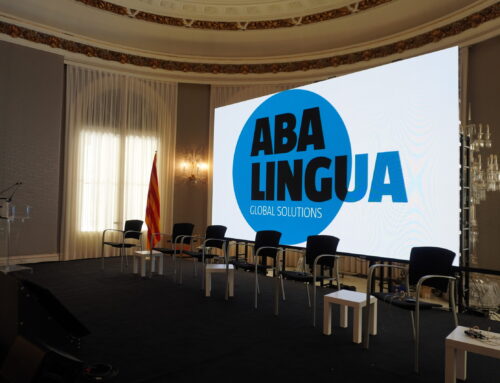Simultaneous interpretation is basically a technique of real-time interpretation, where the interpreter expresses the speaker’s speech in another language at the same time, and the listeners must use receivers with headphones to be able to hear this information. Due to time saving, Simultaneoues interpretation is the most used in international acts, congresses, conferences, multicultural events or any event where the participants don’t speak the exact same language. It is a very powerful tool to break down language barriers.
However, we want to tell you 3 curious facts that perhaps you didn’t know about this type of interpretation:
Décalage
There is a lapse of time, between the original speech and the interpretation, this is known as décalage. It is that small gap that exists while the orator speaks, the interpreter listens, processes, and begins to express in another language. At Abalingua we have certified interpreters, in almost any language combination, who knows how to manage the appropriate décalage for each type of event. For example, if the event’s field is scientific the most suitable would be an almost immediate interpretation. On the other hand, if the event is of a social or political nature, the interpreter may allow himself a longer décalage to know the future context of what he is expressing and thus be able to give a better interpretation.
First interpretation ever
The first event in which an official simultaneous interpretation was carried out, occurred after the Second World War, at the Nuremberg Trials in 1945. At these Trials interpretation was performed in French, Russian, German and English, using developed electronic equipment by IBM. It was from here that simultaneous interpretation as a profession was consolidated.

The most difficult languages
Asian languages win the prize for the most difficult to interpret, with Mandarin Chinese, Korean and Japanese being the most difficult languages, followed by Arabic and Icelandic. Native interpreters of these five languages are part of our great Abalingua’s team. They are joined by the most requested interpreters in the European Union, native speakers in many languages such as French, Spanish, German, Italian and Portuguese for example.
It is evident that the current world is evolving day by day, and we remain at the forefront with the aim of offering the best simultaneous interpretation service to our clients, just as we have been doing these 27 years of service, drop us a line to clients@abalingua.com to request a quote.




